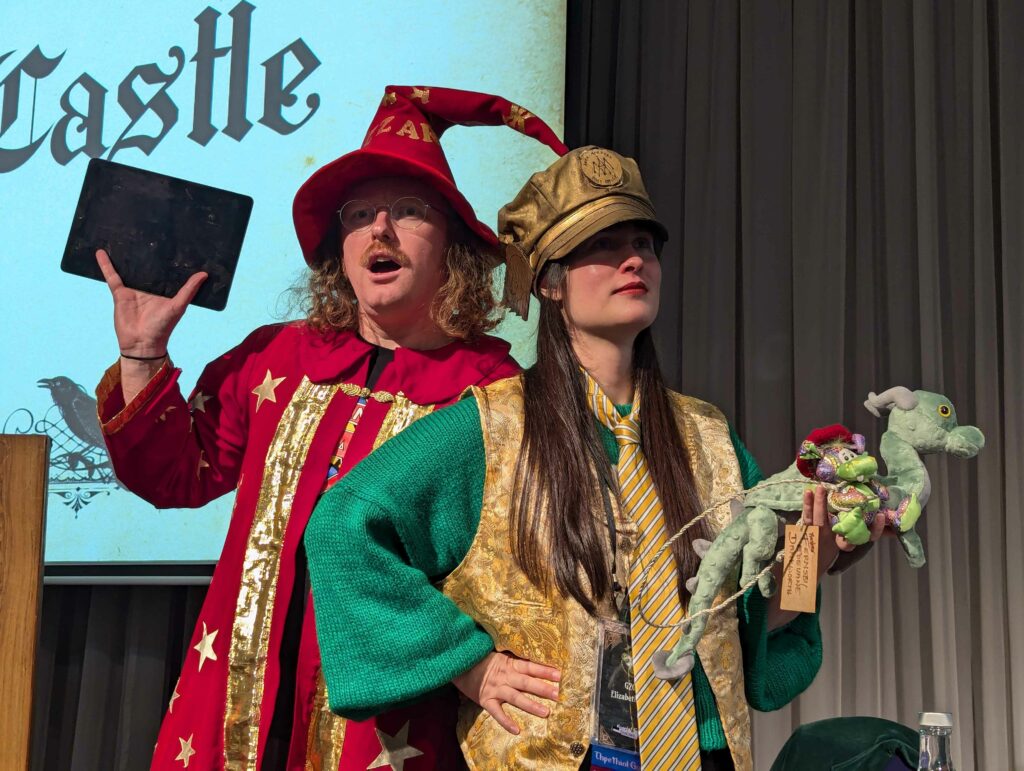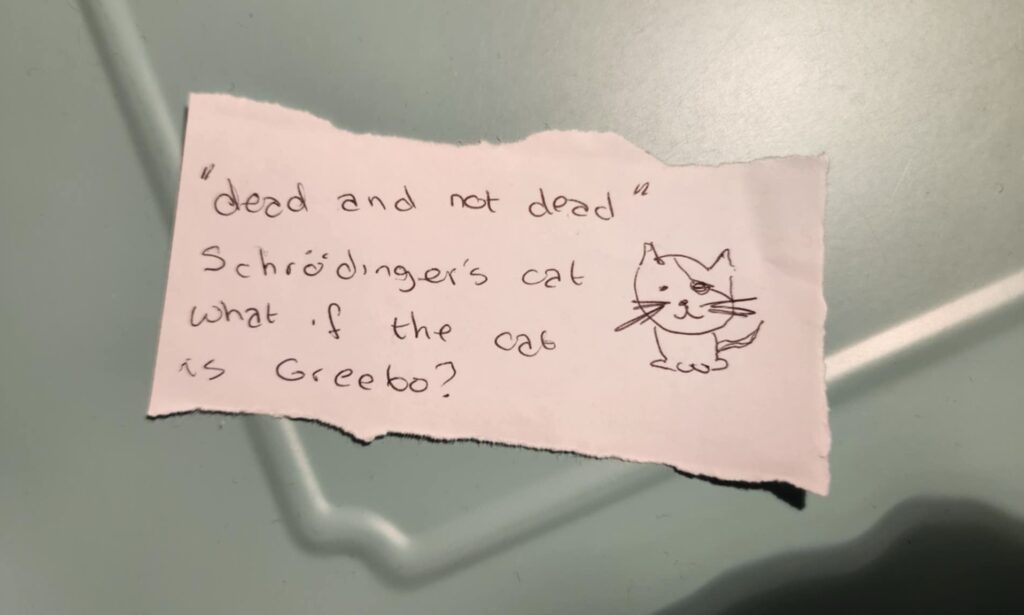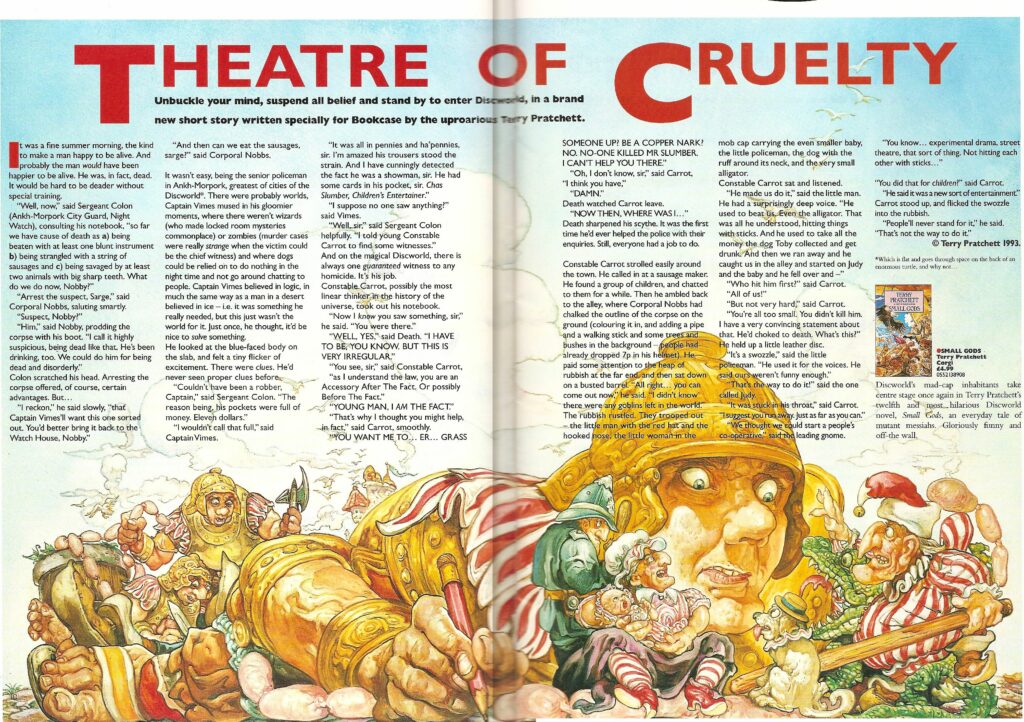#Pratchat85 – AT LAST, SIR TERRY
To mark ten years since Terry Pratchett’s death, Liz, Ben and guest Myfanwy Coghill discuss his 2010 Richard Dimbleby lecture, “Shaking Hands with Death”. Please note that this episode includes discussions of death, terminal illness, assisted dying and suicide.
Pratchett was the first novelist to give the Richard Dimbleby Lecture, an annual talk broadcast on the BBC in memory of Dimbleby, a BBC broadcaster who died in 1965. His subject was a turning point in his activism: from raising awareness (and money) for Alzheimer’s Disease, to talking openly about the inevitability of death, and the importance of being able to choose a good one, safely and legally. The speech was collected in A Slip of the Keyboard in 2014, and published in a standalone volume with an introduction by Rob Wilkins in 2015. (A new edition, with an updated introduction by Rob, will be published in October 2025.) The televised version is also (currently) on YouTube.
We hope we’ve done Pratchett justice in carrying on this discussion. We are lucky to live in Australia, where citizens in most states have access to assisted dying – if under more narrow circumstances than Pratchett might have liked. The Terminally Ill Adults (End of Life) Bill provides similar access, and was introduced in the UK parliament by backbench Labour MP Kim Leadbeater in November 2024. At the time of publication (March 2025), it’s currently at the committee stage; see the episode notes for more details.
Podcast: Play in new window | Download (Duration: 1:54:26 — 52.9MB)
Guest Myfanwy Coghill (she/her) has been many things, including an opera singer, a teacher, a funeral director, and a Dungeon Master (of the Dungeons & Dragons variety). She previously appeared to discuss Maskerade in #Pratchat23, “The Music of the Nitt”, in September 2019.
GNU Elspeth Sutherland; Kat Muscat; Stella Young; Cal Wilson; DJ Ian; and Terry Pratchett. We’d love you to consider supporting the Kat Muscat Fellowship, which provides support and development for a young Australian writer or editor each year; or helping to fund a new documentary about Stella Young, I Am Not Your Inspiration (which coincidentally launched in between us recording and publishing this episode). Pratchett’s favoured charities are well known: the Orang Utan Foundation, and the Alzheimer’s Society. The local Australian equivalent is Dementia Australia.
You can find episode notes and errata on our web site.
Next month is our rescheduled discussion about both volumes of the Ankh-Morpork Archives, which collect material from the Discworld diaries, and their sibling publication The Discworld Almanack! There’s still time for a few more questions; send them in via email (chat@pratchatpodcast.com), or social media using the hashtag #Pratchat84.
Want to help us get to the end of our six(ish) year mission and read every Pratchett book – and more? You can support us with a tip, or a subscription for as little as $2 a month, and that’s cuttin’ our own throats! See our Support Us page for details.




